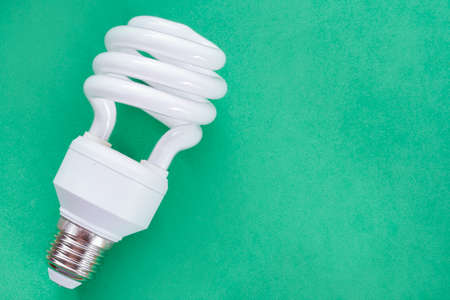Understanding UK Light Bulb Types and Fittings
When curating the perfect ambience for each room in your UK home, understanding the nuances of light bulb types and fittings is essential. British properties are renowned for their rich architectural character, which often means a delightful mix of traditional and contemporary fixtures. The most common cap fittings youll encounter are the classic Bayonet Cap (B22) and the Edison Screw (E27). The B22, with its simple twist-and-lock mechanism, remains a staple in many period homes, while the E27—threaded for a secure fit—is favoured in modern settings. It’s also important to consider specialist bulbs like GU10s for spotlights or G9 capsules for statement lighting pieces. Selecting the right fitting ensures seamless integration with your existing lamps and luminaires, preserving both function and design intent. Take care to check your fixtures requirements before purchasing new bulbs, as mismatched caps can lead to frustrating installation hiccups or detract from your intended design aesthetic.
2. The Role of Lighting in British Home Aesthetics
Lighting is much more than a functional necessity—it is a vital element in crafting the atmosphere and visual harmony within every British home. From classic Victorian terraces to contemporary city flats, the interplay between light and space reflects both tradition and modernity, shaping each room’s identity and purpose. Understanding how to select the right light bulbs means appreciating how lighting influences mood, ambience, and utility in line with UK interior design sensibilities.
In British homes, natural daylight is often limited by overcast skies or architectural features like sash windows and deep cornices. This makes artificial lighting essential for creating warmth and enhancing character. The right bulb—whether warm white for a snug living room or cool daylight for a crisp kitchen—can dramatically alter a room’s feel. Consider how dimmable LEDs echo the gentle glow of candlelit evenings, a beloved hallmark of British cosiness known as ‘hygge’ or simply ‘homely’ comfort.
Traditionally, layered lighting schemes prevail in UK interiors: a blend of ambient (general), task (functional), and accent (decorative) lighting ensures flexibility throughout the day. For example, table lamps with soft shades evoke an inviting reading nook in the lounge, while pendant bulbs create a statement above dining tables—a nod to both classic refinement and contemporary flair.
| Room | Mood/Ambience | Preferred Bulb Type | British Design Touches |
|---|---|---|---|
| Sitting Room | Cosy & Relaxed | Warm White LED (2700K) | Lampshades, Wall Sconces |
| Kitchen | Bright & Energetic | Cool White LED (4000K) | Pendant Lights, Under-cabinet Strips |
| Bedroom | Calm & Restful | Soft White LED (3000K) | Bedside Lamps, Dimmer Switches |
| Hallway | Welcoming & Practical | Daylight LED (5000K) | Wall Lanterns, Recessed Spots |
| Bathroom | Crisp & Clean | Cool Daylight LED (4000-5000K) | Mirror Lighting, Ceiling Spots |
The latest trends in British lighting design celebrate both sustainability and heritage. Energy-efficient bulbs such as LEDs are increasingly favoured not only for their longevity but also for their ability to mimic traditional incandescent warmth. Statement fixtures featuring brass or matte black finishes bring a touch of period drama into modern spaces, while smart lighting controls offer convenience without sacrificing elegance. Ultimately, selecting the ideal bulb allows you to curate the perfect balance between timeless charm and contemporary living—an enduring hallmark of British home aesthetics.

3. Selecting Bulbs for Living Spaces
The living room is the heart of every UK home—a place to unwind, gather, and entertain. Choosing the right bulbs here is essential to achieve a warm and inviting ambiance. Opt for LED or halogen bulbs with a warm white temperature (around 2700K–3000K) to create a cosy glow that complements both classic Victorian lounges and sleek modern sitting rooms.
Layering Light Sources for Depth
To elevate the aesthetic, layer your lighting: combine ceiling pendants or chandeliers with table lamps, floor lamps, and wall sconces. This approach allows you to adjust the mood throughout the day, balancing ambient light with focused task or accent lighting. For listed or period properties, select fixtures that highlight original cornicing, fireplaces, or decorative mouldings—using subtle uplighters or picture lights enhances architectural character without overpowering it.
Modern Interiors: Sleek and Functional
If your space leans contemporary, opt for minimalist fittings with dimmable bulbs. Smart bulbs are particularly popular across the UK for their adaptability; simply adjust brightness and colour warmth via an app to suit every occasion, from movie nights to casual gatherings.
Tips for Enhancing Your Space
Finally, consider energy efficiency—a priority in many British households. Choose bulbs with high lumens but low wattage to keep electricity bills in check while achieving beautiful illumination. Whether you favour vintage filament styles or crisp LED spotlights, the right combination will make your living space both practical and visually harmonious.
4. Best Bulb Choices for Kitchens and Dining Areas
When it comes to kitchens and dining areas in UK homes, selecting the right light bulbs is about balancing practical illumination with an inviting atmosphere. Given the diverse layouts—from classic galley kitchens to open-plan dining zones—lighting should be tailored to enhance both function and mood, reflecting local culinary traditions and social gatherings.
Task Lighting for Kitchens
Kitchens demand clear, focused lighting for tasks such as chopping, cooking, and cleaning. Under-cabinet LED strips or GU10 LED spotlights are popular choices across Britain, offering bright, directional light without harsh glare. Opt for bulbs with a colour temperature around 4000K (cool white) to mimic natural daylight, ensuring accurate food preparation and a crisp, clean look. Energy-efficient LEDs not only lower your bills but also reduce heat output—ideal in busy kitchen environments.
Accent Lighting for Dining Spaces
The dining area is the heart of British home entertaining, where warm ambience sets the tone for conversation and comfort. Pendant lights with dimmable LED bulbs above the table allow you to adjust brightness according to the occasion—be it a lively Sunday roast or an intimate evening meal. Choose bulbs with a colour temperature between 2700K and 3000K (warm white) to create a soft glow reminiscent of candlelight, echoing traditional British hospitality.
Recommended Bulb Types
| Area | Type | Recommended Bulb | Colour Temperature | Energy Efficiency |
|---|---|---|---|---|
| Kitchen Task Zones | Downlights/Under-cabinet | LED GU10/LED Strip | 4000K (Cool White) | A++ Rated LED |
| Dining Table | Pendant/Dimmable Ceiling Light | Dimmable LED GLS/B22/E27 Bulbs | 2700–3000K (Warm White) | A++ Rated LED |
| Accent Features | Cabinet/Uplights | LED Spot or Puck Lights | 3000K (Soft White) | A+ Rated LED |
Pro Tip: Layer Your Lighting
Create depth by layering different types of lighting—task, accent, and ambient—to ensure flexibility throughout the day. In UK homes where space can be at a premium, clever placement of compact LEDs maximises both efficiency and style while honouring the convivial spirit of British dining.
5. Ideal Lighting for Bedrooms and Personal Spaces
When it comes to British bedrooms and personal retreats, lighting should be all about cultivating tranquillity and comfort. Selecting the right bulbs goes beyond mere functionality—it shapes the very mood of your sanctuary. To create a haven for relaxation, opt for bulbs that emit a warm white glow, ideally between 2700K and 3000K. This temperature range mimics the gentle hues of sunset, helping ease you into restful evenings, especially during the UK’s long winters.
Embracing Dimmable Options
Dimmable bulbs are an excellent choice for bedrooms, offering flexibility to tailor brightness throughout the day. Whether you’re winding down with a book or gently waking up on a gloomy morning, the ability to adjust light levels is invaluable. When selecting dimmable options, ensure compatibility with your existing fixtures and switches—many classic British homes may require updated fittings to fully enjoy modern LED dimming features.
Prioritising Comfort and Well-Being
The British bedroom is often a retreat from busy city life or blustery countryside weather. Soft lighting not only soothes but can also enhance your sense of privacy and warmth. Avoid harsh cool-white or daylight bulbs in these spaces as they can feel clinical and disrupt your circadian rhythm. Instead, look for bulbs labelled as ‘warm white’ or even ‘soft white’ for a cocooning effect.
Top Tip: Layer Your Lighting
To achieve the most harmonious ambiance, layer different sources—think bedside lamps with soft-glow LED bulbs, complemented by a main ceiling fixture fitted with a dimmable warm bulb. Accent lighting such as fairy lights or wall sconces adds extra charm and intimacy, perfect for winding down after a bustling British day.
6. Task Lighting for Bathrooms and Utility Rooms
When it comes to selecting light bulbs for bathrooms and utility rooms in UK homes, the emphasis must be on both function and safety. Proper bathroom lighting is essential not only for visual clarity during daily routines—such as shaving or applying makeup—but also to create a calming atmosphere reminiscent of a spa retreat. For task lighting in these moisture-prone areas, choose high-CRI (Colour Rendering Index) LED bulbs that mimic natural daylight, ensuring true-to-life reflection.
Moisture-Safe Fittings
UK bathrooms demand fittings that can withstand humidity and splashes. Look for light fixtures rated with an appropriate IP rating, typically IP44 or above, to guarantee resistance to water ingress. This is especially important around sinks, showers, and baths, where moisture exposure is highest. In utility rooms—often used for laundry or storage—opt for robust, sealed fittings that are easy to clean and maintain.
Compliance with UK Electrical Safety Standards
No lighting plan is complete without adhering to stringent British electrical regulations. All bathroom and utility room installations must comply with the BS 7671 wiring regulations, ensuring both the fittings and bulbs are certified for wet environments. It’s advisable to consult a qualified electrician when planning or updating your lighting scheme, as this guarantees peace of mind alongside beautifully illuminated spaces.
Design Inspiration Tip
For a touch of contemporary UK style, consider layered lighting: combine recessed downlights with wall-mounted sconces or mirror lights for versatile illumination. This approach not only enhances functionality but also elevates the spatial aesthetic, transforming everyday tasks into pleasurable rituals.
7. Energy Efficiency and Sustainability
When selecting light bulbs for your UK home, energy efficiency and sustainability should be at the forefront of your decisions. Embracing LED technology is not just a design-forward choice, but also one that aligns perfectly with the UK’s stringent energy ratings and environmental ambitions. LEDs consume significantly less electricity than traditional incandescent or halogen bulbs, offering long-lasting performance while keeping your energy bills in check—a crucial consideration given the rising cost of utilities across the UK.
Opting for eco-friendly bulbs means you’re not only reducing your carbon footprint but also contributing to nationwide efforts towards net-zero targets. Look out for bulbs rated A+ or above on the UK’s energy scale; these not only assure optimal brightness but also promise substantial savings over time. Furthermore, LEDs are available in a wide array of colour temperatures and styles, allowing you to tailor the atmosphere of each room—from cosy lounges to invigorating kitchens—without compromising on sustainability.
Another key point is recycling: many local councils across Britain offer dedicated collection points for old bulbs, supporting a circular economy mindset within your home design ethos. By choosing energy-efficient solutions and responsibly disposing of spent bulbs, you’ll be weaving sustainability seamlessly into your daily living spaces—proof that beautiful interiors can indeed go hand-in-hand with environmental responsibility.


